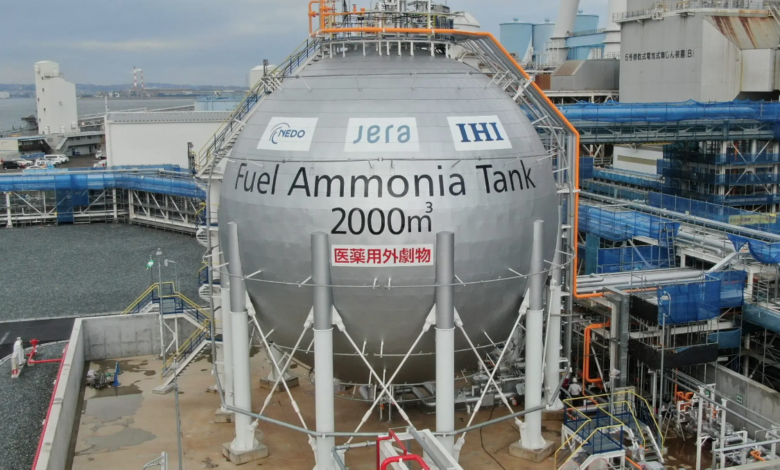Ammonia to “clean up” coal-fired power plant: the first test in Japan

Ammonia (grey) to reduce carbon emissions
Ammonia prolongs the life of coal-fired power plants and makes them more “clean“. It is the goal of the first commercial-scale test launched on April 1 by Jera, Japan’s leading energy player. At unit 4 of the Hekinan coal-fired power plant, Jera began the co-combustion of a mix of coal and 20% of grey ammonia (produced from methane with steam reforming). The leap of scale comes 3 years after the first tests conducted at another unit of the same plant.
Reducing emissions from coal-fired power plants with Ammonia
The trial will continue for 3 months, until June, and will take about 40,000 tons of gray ammonia. At this stage, Jera’s goal is to analyze the nitrogen oxide emissions generated by the process and investigate other factors including site operation and impact on boilers and other components.
If the results are satisfactory, Jera aims to validate the coal-ammonia co-combustion technology within 1 year, in March 2025. For the large-scale start-up of the use of ammonia in other coal-fired power plants, however, it will have to wait until 2027-2028. Subsequently, the company aims to perfect the process to increase the share of ammonia up to 50% and employ it on a commercial scale in the first half of the next decade. In parallel, it is studying changes to the components of coal-fired power plants to burn ammonia exclusively.
The unknowns of co-combustion coal-ammonia
Jera’s initiative is supported by the state research center Nedo and is part of Japan’s transition plans for decarbonization of the energy sector. Co-combustion of coal and ammonia has not yet been demonstrated on a large scale and is an alternative solution to the more widespread CO2 capture and storage to reduce plant emissions.
Even if the Hekinan test were to give the project a green light, other unknowns would remain before large-scale adoption could be possible. Firstly, the costs, but also the supply of sufficient quantities of ammonia. Only Jera’s 2030 demand for ammonia would eat 70% of Japan’s current target for ammonia production (3 million t/year). There are also uncertainties surrounding the control of nitrogen oxide emissions and the safe storage of large quantities of ammonia.





